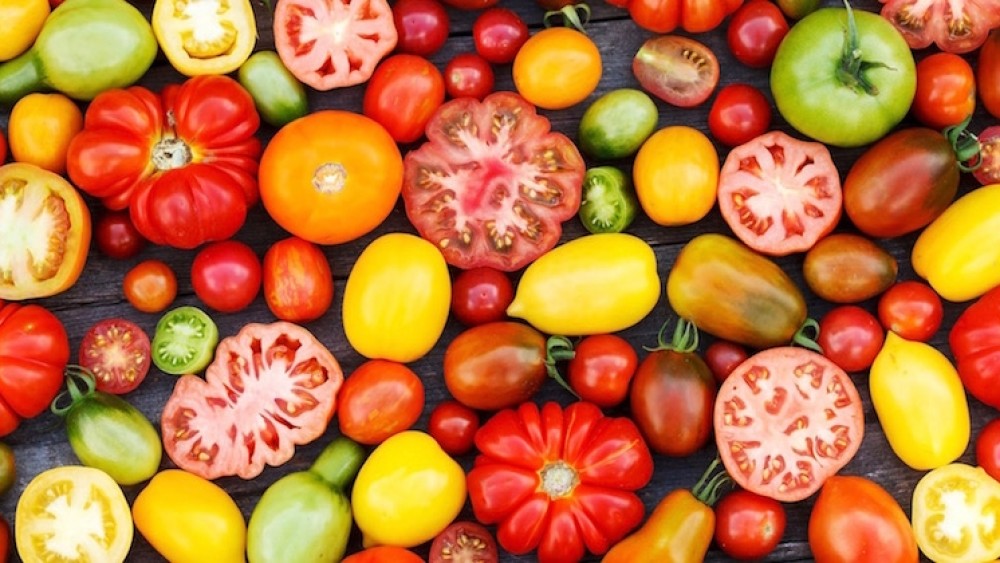Italians do it with Tomatoes in all different shapes and sizes
June 16, 2016

Italians do it with Tomatoes in all different shapes and sizes
Raw, cooked, pureed or stuffed, the Italians have made this fruit a centrepiece of their cuisine. Learn to cook with our organic grown tomatoes at Tuscookany
The Italian cuisine is famous worldwide for its recipes, its aromas and flavours, but it is also recognizable for its gaudy colours, a pure expression of joy de vivre, beautifully represented by one of the main ingredients of the Mediterranean culinary landscape: the tomatoes.
The Origins of how the Italians fell in love with tomatoes
This colourful ingredient came from the Americas and slowly entered the culture of the peninsula to become a protagonist of many Italian dishes. At first, it was used to make stews combined with other vegetables: nothing too special for the pomodoro (the Italian name of this great fruit, yes biologically speaking tomatoes are fruits not veggies). Little by little, tomatoes climbed the ranks to become the poster boys of the cuisine made in Italy, flavouring pasta dishes and turning into the protagonist of that worldwide triumph called pizza.
So many varieties of tomatoes all with their own specific qualities
Of course, nowadays the number of varieties of tomatoes available around Italy and beyond has established this beautiful fruit as the ultimate touch of many dishes. For instance, you can find beefsteak tomatoes like the Costoluto Fiorentino and small multi-coloured cherry tomatoes that are perfect in salads, because of their sweetness and playful elegance (the cherry tomatoes) and thanks to their ability to add texture and combine perfectly with a vinaigrette use the the Costoluto Fiorentino. Plum tomatoes like the San Marzano are your choice if you want to make a sauce, including a pizza sauce, while the Principe Borghese is the variety most Italians use for sun drying. The San Marzano is also great for soups because of its meaty texture. These are just a few examples: pick and choose and ask our chefs at Tuscookany for some advice or come and learn to cook in Tuscany using our organic tomatoes grown at the villas in all shapes and sizes.
Italians Do It Better… with Tomatoes
For the Italians, the maccheroni with tomato sauce is an everyday convivial dish, quick and casual but always important with its powerful aroma. In Northern Italy it is often combined with butter while in the South olive oil is its faithful companion. You should add Parmesan cheese for the gourmands, but remember this became a habit only in the early Twentieth Century, when tomatoes started to be cultivated throughout the peninsula. Slowly the pomodoro, which in Italian literally means golden fruit, has become the partner of fish, meat… in other words: what would the Mediterranean diet be without its golden boy?
This said, we should remember that, before the fame of the tomatoes exploded, an Italian invention changed the rules of the game in the Eighteenth Century and allowed these fruits to step up. To preserve the precious pomodoro, the Italians began to cook the tomatoes with the typical soffritto veggies. The mix was then crushed and sieved, and finally poured in glass containers that were closed quickly while the sauce was still hot. This is how the story of the legendary Passata, known as pummarola in Naples, began: the sauce used today on pasta and pizzas and a huge variety of dishes around the globe.
The love Italians feel for strong, penetrating flavours, those that enter through the nostrils and not just via the eyes and the palate, was also the reason behind the marriage of the tomatoes with two spices: basil and oregano. The first cool and intoxicating, the second deep and pungent, these herbs turn tomato-based dishes into masterpieces while making them easy to digest.
Tasty Anecdote
There are many anecdotes related to the tomato, which as we said originally comes from the Americas (specifically Chile and Ecuador). As the story goes, the South American growers of the plant did not eat its fruits: tomatoes were used for decorative or magic purposes, but not as food. When it was imported, in almost all countries, except Italy, this fruit was named after the term that was used by the Aztecs: xitomatl, which means great tomatl.
However, the colonizers made a mistake. Tomatl was not the fruit they imported, it was a smaller plant with green fruits, which was indeed used in the South American cuisine. It was what we now know as Tomatillo. In other words, while convinced to take home an edible plant, they imported a fruit the natives considered inedible, the same golden fruit the Italians turned into the ingredient that changed the entire culinary culture of the peninsula. Interesting, wouldn’t you say?
Please share your thoughts about Tomatoes? We’d love to hear from you in the comments below, or share our post with your friends?

Interested in our cooking courses at one of our Tuscan villas?
Do you want to enjoy our Tuscany cooking classes with plenty of time to explore in your free time, all while staying in an amazing villa?
Reviews
How our guests experienced the Tuscookany courses
Reviews from our former guests made about their visit to Tuscookany on TripAdvisor, facebook, Twitter, Google, Chow and Yelp.





